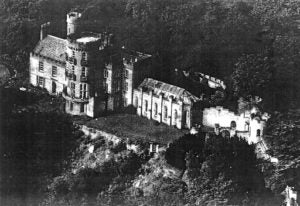Clan Erskine People
John Erskine, 6th or 1st Earl of Mar (1510-72)
The 1st Earl thanks to the re-instatement of the peerage by Mary, Queen of Scots, John Erskine should have been the 6th Earl but for James II jealously removing it from his powerful ancestor. He was keeper of Edinburgh Castle until after the murder of Queen Mary’s husband Darnley.
His position was swapped for the hereditary post of Captain of Stirling Castle. For the last year of his life he was Regent to the young James VI.
John Erskine, 7th or 2nd Earl of Mar (1562-1634)
After his father’s death, John became Regent for James VI, and they were educated together.
His involvement in the Ruthven Raid in 1582 brought him three years exile. Nonetheless he became Treasurer of Scotland in 1616.
John Erskine, 6th or 11th Earl of Mar (1675-1732)
Despite his important contributions to the family estate by developing various industrial and agricultural project such as coal mining, ‘Bobbing John’ is remembered as the ruin of the family for his sycophantic behaviour towards Charles I. His inept command brought defeat at Sherrifmuir, followed by the back-stabbing disclosure of his Jacobite colleagues’ identities once in France.
His actions had the Erskine of Mar estates and titles forfeited.
James Erskine (1679-1754)
Brother of ‘Bobbing John’, James Erskine became Lord Grange in 1710 when he was made Lord Justice Clerk. Even for a politician, Erskine’s treatments of his wife, Rachel Chiesley, is notable.
Threats by her to proclaim him a Jacobite pushed him to plot her demise with Simon Fraser of Lovat in 1732. She was secretly removed to the country and kept in a room alone for six months. After this time she was moved to the Monarch Isles for two years, then to St Kilda for the next seven.

St Kilda
Her last three years, by which time insanity had taken hold of her, were spent in confinement on Skye. Meanwhile, two years into her abduction, Erskine had held a funeral for her in Edinburgh, gone on to become MP for Stirlingshire, and secretary to the Prince of Wales.
Thomas Alexander Erskine, 6th Earl of Kellie (1732-81) - main image
‘Fiddler Tam’ returned from Mannheim in 1756, where he had studied violin under Stamitz, and claimed his place as one of Britain’s major composers. Ten of his symphonies were published between 1761 and 1767. Many of his wind instrument scores were written and used on the spot, not collected afterwards and subsequently lost.
Kellie enjoyed his drink and was founder of the Capilliare Club in Edinburgh, where alcohol and music would be enjoyed each Sunday. A body of as yet unpublished work exists, known as the Kilravock Partbooks.
Robert Erskine (1677-1718)
At the age of 15 Robert, 6th son of Sir Charles Erskine of Alva was apprentice to a surgeon-apothecary. In 1700 he graduated as an MD in Utrecht, having studied chemistry, anatomy, surgery and botany. By 1705 he was surgeon to Peter the Great, Tsar of Russia, and a year after that was in charge of the entire country’s medical administration.
With the Tsar’s support he collated an immense library and opened St Petersburg’s first Physic Garden before dying aged forty-one.
Clan Erskine Places
Alloa Tower

Alloa Tower in Alloa, Clackmannanshire, central Scotland, is an early 14th century tower house that served as the medieval residence of the Erskine family, later Earls of Mar.
Braemar Castle

The current Braemar Castle was built by John Erskine, 18th Earl of Mar, in 1628, though, there had been a previous castle on the estate. It is now a Clan Farquharson castle.









